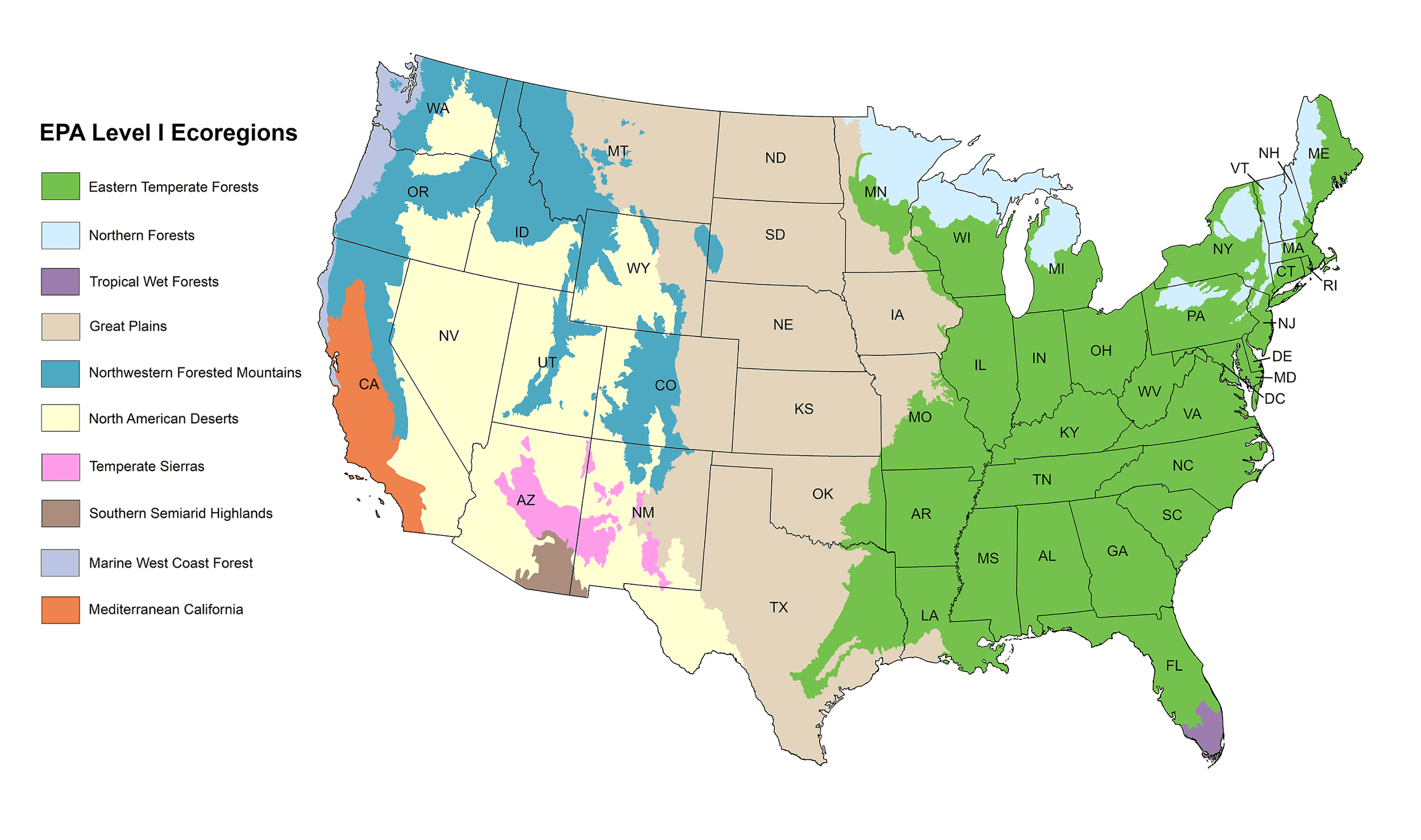Why Ecoregions? By Doug Tallamy
As many of you noticed, we recently added ‘Container Gardening with Keystones’ to the Homegrown National Park website. This new resource will guide millions of people who live in apartments or condos, or whose yard space is so small that in-ground plantings are impossible, to contribute to Homegrown National Park by planting productive native plants in containers. Imagine, if everyone in an apartment building added flowering plants to their balconies, what once seemed like an inert rock cliff to a foraging bee would suddenly become a rich source of pollen and nectar.
But which plants should people put in their containers? Native species that are adapted to where you live, of course, but how do you find out what those plants are? This is the information our new guide provides, but rather than listing plants by state or county, reference points people typically use to find a location, we have decided to use ecoregions. No, we are not trying to make plant choice more complicated than it is. Just the opposite! Using ecoregions as a guide will simplify plant choice while making these decisions more accurate. If you are skeptical because that sounds just like a promise tech support makes before installing a computer update that then renders your computer useless, I don’t blame you. But here’s our reasoning.
Plants do not distribute themselves according to political boundaries like state or county. Plants grow where they can, based on soil type, rainfall, temperature, altitude, and past geological events like glaciation. And these environmental conditions do not follow state boundaries.
Take Colorado, for example. Even at the most generalized ecoregion level (level 1), Colorado contains three ecoregions within its borders: great plains, northwestern forested mountains, and North American deserts. The plants that naturally occur in each of these ecoregions differ from each other. This is why state listings of native plants often differ from ecoregion lists; a plant may occur within a state’s boundaries but not within a particular ecoregion in that state. The same reasoning also applies to counties, although most counties are small enough that the entire county occurs within a single ecoregion.

How do you know what ecoregion you live in? Simply look at the map of ecoregions we supply on the website. Color-coded ecoregions make it easy for you to align your location within a particular color. Our first launch of the best native plants for containers is based on Ecoregion Level 1. We recognize that Level 1 is quite generalized, particularly for folks in the East, and places people who live in Illinois in the same ecoregion as people who live in northern Florida. This is why we are moving to Ecoregion Level 2 and should have that ready by March 2023. You don’t have to wait for the launch of Level 2, though. The plants we recommend have broad geographic ranges and will provide valuable forage for bees, butterflies, and those nocturnal moths we hardly ever see.
